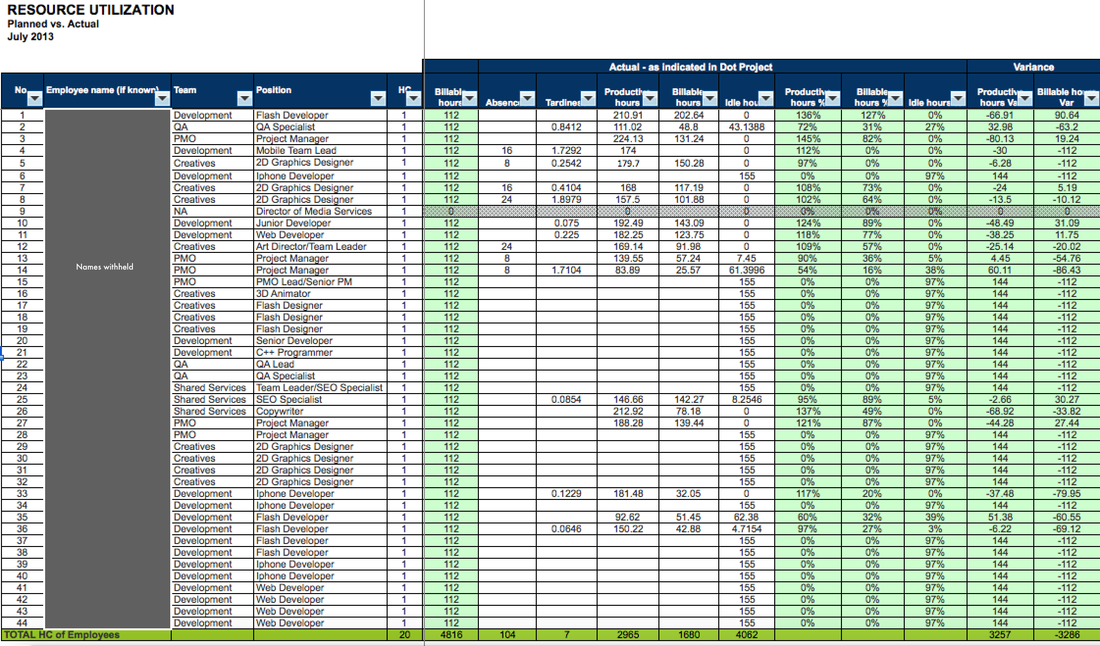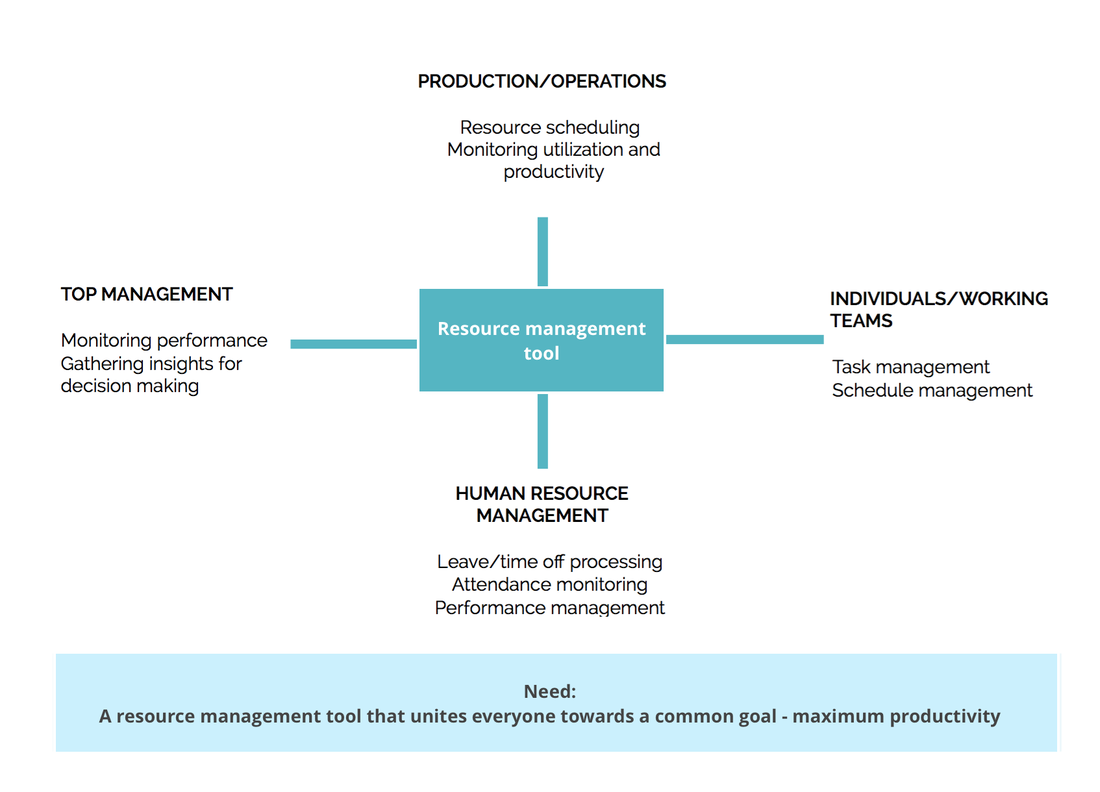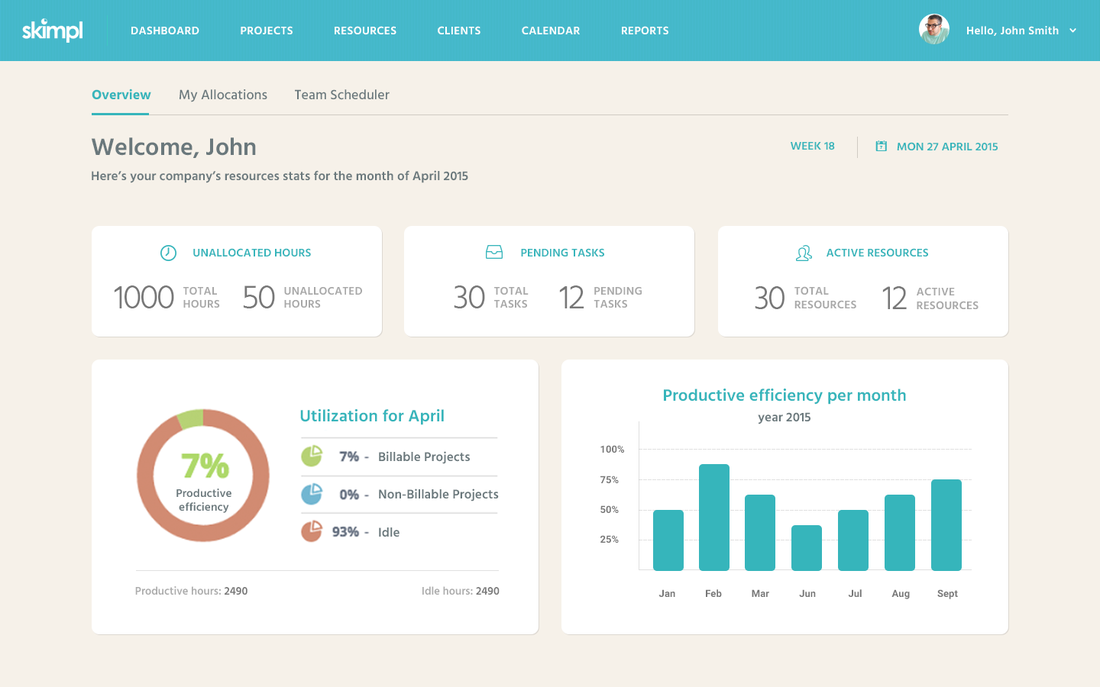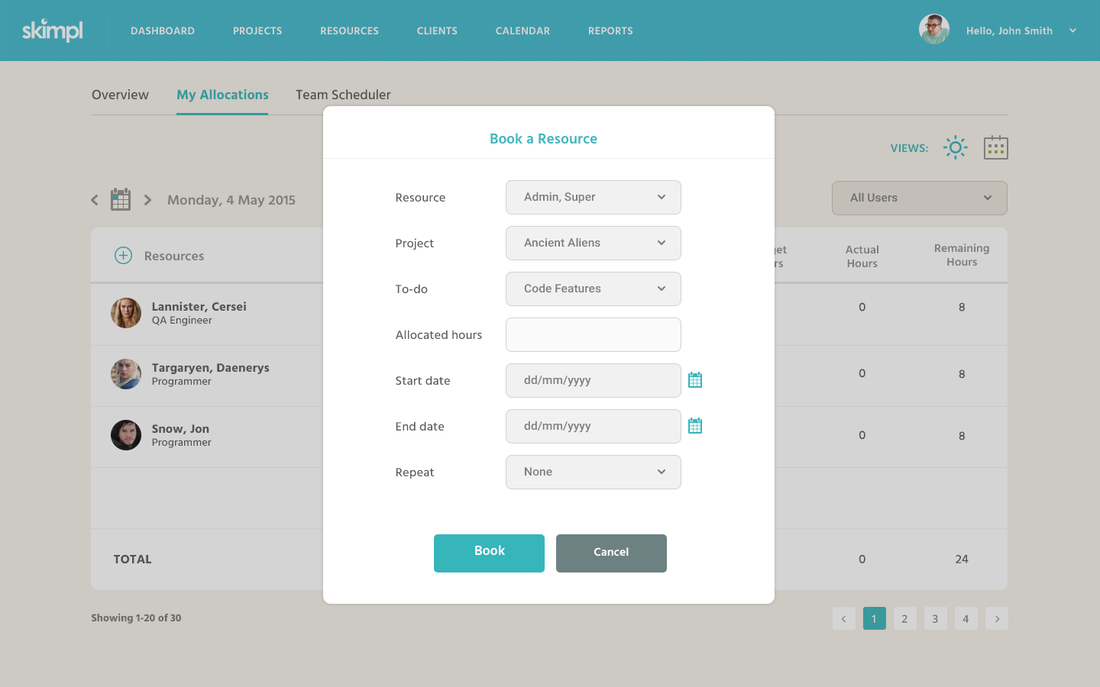|
In my previous work managing game studios, a perennial headache for me was maximizing utilization and people’s productivity. There was always too much waste and it was hard to control it. As studio head, I was required to justify every single hire and make sure every penny spent was worth it. The only way to prove that was to study resource utilization data. What we’d normally do is gather reports from an internal time clocking software, put them all on Excel, and then come up with summaries. This whole process was always cumbersome and prone to errors. In addition it’d take us 3-5 days on average every month to clean up time clock data, get rid of nonessential information, and put together useful reports. This was costing us too much in terms of time and money. Very frustrating yet sadly inescapable. I talked to friends who were also heads of game studios and I found out that they, too, had the same problems. I looked online for some options. But I couldn’t find anything that’s easy to set up, available on the cloud, and had both the depth and simplicity that I wanted in a productivity software. So I decided to come up with my own instead. As a manager, my ideal situation would have been to open a dashboard that would give me a high-level overview of what’s going on in the company.
I wanted easy answers to these questions. I figured that the way to do this is to start from people’s schedules. If we have data on people’s schedules as well as their planned and actual time spent on every task, we can generate all the data needed to answer the high-level questions I wrote above. In addition, we can address problems being faced by other teams related to schedules. For instance: Team Leaders - need to account for the their team - need to know what team member is doing at any given day or time - need to know who is idle and who is not HR Managers - need to get closer to what is happening to the team if they are to be able to help improve people’s performances - right now they’re an isolated group. I figured that if they’d be able to access data on what people are doing, they’d be able to appreciate and help plan initiatives to motivate and tie good performance with rewards. Below is a diagram listing all the stakeholders and what they'd need out of a resource management tool: It took us a very long time to come up with the core feature set for Skimpl. There were all sorts of ideas, but what we wanted was to come up with a productivity software that was simple yet has depth to it, as opposed to other products that are simply simple (shallow). Now a couple of years of hard work later, we've been able to come up with a platform that can help managers get the best out of their resources. It saves the company a tremendous time and effort since: - it lessens the time spent gathering utilization data and coming up with reports - it helps the company monitor actual utilization and plan for future allocation easily - it gives information conveniently in a matter of seconds Overall, our vision at Skimpl is to be the most successful cloud-based resource management tool for SMEs within 3 years.
Right now that title may be held by SAAS platforms such as Resource Guru and WhenIWork. Those tools are also cool and they’re accomplishing the same goals as us. But we’re different in that we pay more attention to reporting. We think that when people scrutinize performance, they should start with overall reports first, and then drill down to issues afterwards. Another thing is that Resource Guru and WhenIWork are both targeted at one user group only (either Production people or HR people but not both). Skimpl aims at alignment. Which means it can be used by everyone in the company, although at varying levels. For instance, individuals can look into their own or their teams’ productivity and compare it with their own targets. This puts productivity management into the hands in everyone in the company. With everyone engaged, it should be easier to improve overall productivity. |
AUTHOR
I'm passionate about business, art, and technology. For more about me, click here.
BOOK PROJECT
Here's a book I co-wrote with a bunch of industry colleagues. Not sure if you'll find it useful, but feel free to check once you can. OTHER SITES
Personal
Tortured squid Hobbies & other stuff Work LegalMatch Philippines Artcebu Others Ateneo Graduate School of Business University of San Carlos Archives
October 2020
|





